I Tried Marie Kondo’s Method and It Was a Disaster – 9 Organization Hacks That Stick
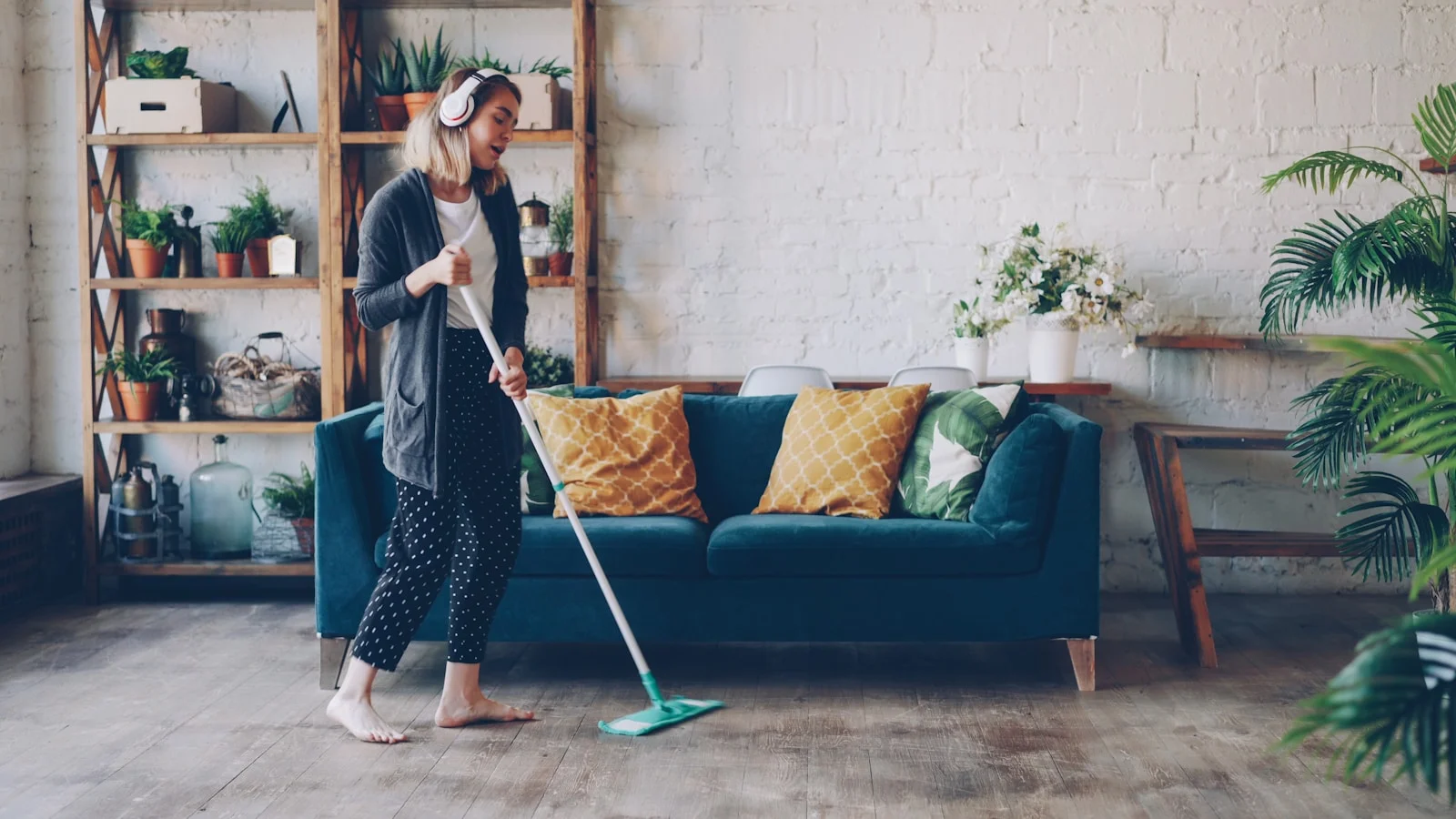
So there I was, surrounded by literally every piece of clothing I owned, sprawled across my bed like some kind of fabric explosion. Marie Kondo’s book was open on my nightstand, and I was supposed to be holding each item and asking, “Does this spark joy?”
Spoiler alert: the only thing sparking was my rising panic.
Don’t get me wrong – I love Marie Kondo. Her Netflix show made me cry (in a good way). But her method? For me, in my real life, with my ADHD brain and my tiny apartment and my complete lack of folding skills? It was a beautiful disaster.
And you know what? That’s okay. Because what I learned from that failure led me to organization hacks that actually work for real humans with messy lives.
Let me share what happened, and more importantly, what actually stuck.
Why KonMari Didn’t Work for Me (And Maybe You Too)
Here’s the thing nobody talks about: Marie Kondo’s method is perfect… if you’re Marie Kondo.
She’s naturally organized. She loves tidying. She has an aesthetic sensibility that makes folding underwear look like origami art. Me? I once lost my phone while actively talking on it.
Here’s what went wrong:
Week 1: The Great Clothing Catastrophe
- Pulled out ALL my clothes like the book said
- Got overwhelmed within 15 minutes
- Nothing sparked joy because I was too stressed to feel anything
- Ended up shoving everything back and ordering pizza
Week 2: The Paper Avalanche
- Started sorting every paper in my house
- Found my high school report cards, my grandmother’s recipes, 47 takeout menus
- Had an emotional breakdown over a birthday card from 2011
- Gave up and watched Netflix instead
Week 3: The Komono Chaos
- “Komono” means miscellaneous items (kitchen stuff, bathroom products, etc.)
- Realized I had 23 half-used bottles of lotion
- Spiraled into existential crisis about my purchasing habits
- Abandoned ship entirely
The method isn’t bad. It just wasn’t right for me. And that’s when I stopped trying to be someone I’m not and started finding systems that worked for my actual life.
The Real Problem with Most Organization Advice
You know what’s wild? Most organization advice assumes you:
- Have time to maintain elaborate systems
- Naturally enjoy organizing (who are these people??)
- Can dedicate entire weekends to decluttering
- Have endless storage solutions
- Will magically become a different person
But real life looks like this:
| What Pinterest Shows | What Actually Happens |
|---|---|
| Perfectly labeled minimalist pantry | Cereal boxes shoved wherever they fit |
| Color-coded closet with matching hangers | Clean clothes living on “the chair” |
| Pristine entryway with hooks for everything | Pile of shoes by the door and keys… somewhere |
| Magazine-worthy bathroom counter | Toothpaste and makeup explosion |
| Organized junk drawer with dividers | Drawer that can barely close, full of mystery items |
Sound familiar? Yeah, me too. So I stopped chasing perfection and started chasing “good enough.”
The 9 Organization Hacks That Actually Stuck
These aren’t Instagram-perfect. They’re not minimalist dreams. But they work. They stick. And they don’t require you to become a different person.
1. The “One Touch” Rule (My Game-Changer)
The concept: When you pick something up, deal with it right then. No putting it down to “handle later.”
Why it works: Because “later” is a lie we tell ourselves. Later never comes. We’ve all got that pile of mail that’s been sitting there for three weeks, right?
How I use it:
- Mail comes in → Open it immediately, recycle junk, deal with bills
- Dirty dish in my hand → Put it directly in the dishwasher, not the sink
- Take off my jacket → Hang it up right then, not on the chair
Is it perfect every time? Nope. But even doing this 60% of the time changed everything.
Real talk: This takes practice. Start with just one category (I started with mail). Once that becomes automatic, add another.
2. The “Drop Zone” Strategy
The concept: Instead of fighting your natural habits, design around them.
I used to shame myself for dumping everything by the door. Then I got smart: I put a basket there. Now it’s not a mess – it’s a “drop zone.”
My drop zones:
- Basket by the front door: keys, sunglasses, mail, whatever I’m holding
- Hook by the bathroom: tomorrow’s clothes (so I’m not scrambling in the morning)
- Tray on my nightstand: phone, jewelry, water bottle
- Bowl in the kitchen: receipts and random pocket stuff
The magic: I’m not changing my behavior (I’m still gonna dump stuff). I’m just containing the chaos.

3. The “Good Enough” Folding Method
Marie Kondo’s folding technique is beautiful. It’s also time-consuming and, for me, unsustainable.
My version:
- Fold things in half, then in half again. That’s it.
- They stand up enough to see them
- Takes 30 seconds instead of 3 minutes per item
- Still looks way better than a pile
Comparison of folding methods:
| Method | Time Per Item | Difficulty | Stays Neat | Reality Check |
|---|---|---|---|---|
| KonMari fold | 2-3 minutes | High | Very | Will you actually do this every week? |
| Traditional fold | 1 minute | Medium | Somewhat | Better, but still feels like homework |
| “Good Enough” fold | 30 seconds | Low | Good enough | Actually sustainable |
| No fold (pile) | 0 seconds | None | Disaster | Where we all end up anyway |
Bottom line: Some organization is infinitely better than no organization because the “perfect” system is too hard.
4. The “Container Solution”
Here’s a secret: containers create automatic limits.
I don’t need to decide how many coffee mugs to keep. I have one shelf. When the shelf is full, that’s enough mugs. Done.
Where I use this:
- Makeup bag: if it doesn’t fit in the bag, I don’t need it
- Sock drawer: one drawer, no more
- Tupperware cabinet: one cabinet, and I got rid of all the ones without lids
- Cleaning supplies: one caddy under the sink
Why this works: The container makes the decision for you. No willpower needed. No “does this spark joy?” anxiety. Just: does it fit? Yes or no.
Pro tip: Start with containers you already have. Don’t go buying a bunch of organizing products until you know what you actually need.
5. The “One In, One Out” Rule (But Make It Realistic)
The classic rule says: buy one new shirt, get rid of one old shirt.
My realistic version: Buy something new, get rid of something… eventually. Within the month. Maybe two months. The point is awareness, not perfection.
How it actually looks:
- Bought new running shoes → Old ones go in the donate bag (when I remember)
- Got a new coffee mug (why??) → Pick the chipped one to toss
- New book arrives → One old one goes to the Little Free Library
This keeps me from accumulating endlessly without making me feel restricted.
6. The “Sunday Reset” (15 Minutes Max)
I used to think organizing meant dedicating whole days to it. That’s exhausting. And it made me avoid it entirely.
Instead: 15-minute speed clean every Sunday.
My checklist:
- Clear the kitchen counters
- Deal with the drop zones (put stuff away or make actual decisions)
- Run through the apartment with a laundry basket, picking up anything out of place
- Do a visual scan – what’s bugging me most?
That’s it. Timer goes off, I stop. Even if it’s not done.
The surprising result: This prevents the build-up that leads to overwhelming mess. It’s like brushing your teeth – small maintenance prevents big problems.
7. The “Visibility” Principle
This changed everything: If I can’t see it, it doesn’t exist.
I don’t have a memory for what’s in drawers. So I stopped hiding things in drawers.
What this looks like:
- Clear containers for pantry staples
- Open shelving in my closet (no dresser drawers)
- Hooks instead of hangers when possible
- Command hooks inside cabinets for measuring cups, pot holders
- Magnetic spice rack on the fridge
For my ADHD brain: Out of sight is literally out of mind. So I make things visible.
Word of caution: This can look messy if you’re not strategic. But I’d rather see my stuff and use it than have it hidden away, forgotten, and buy duplicates.
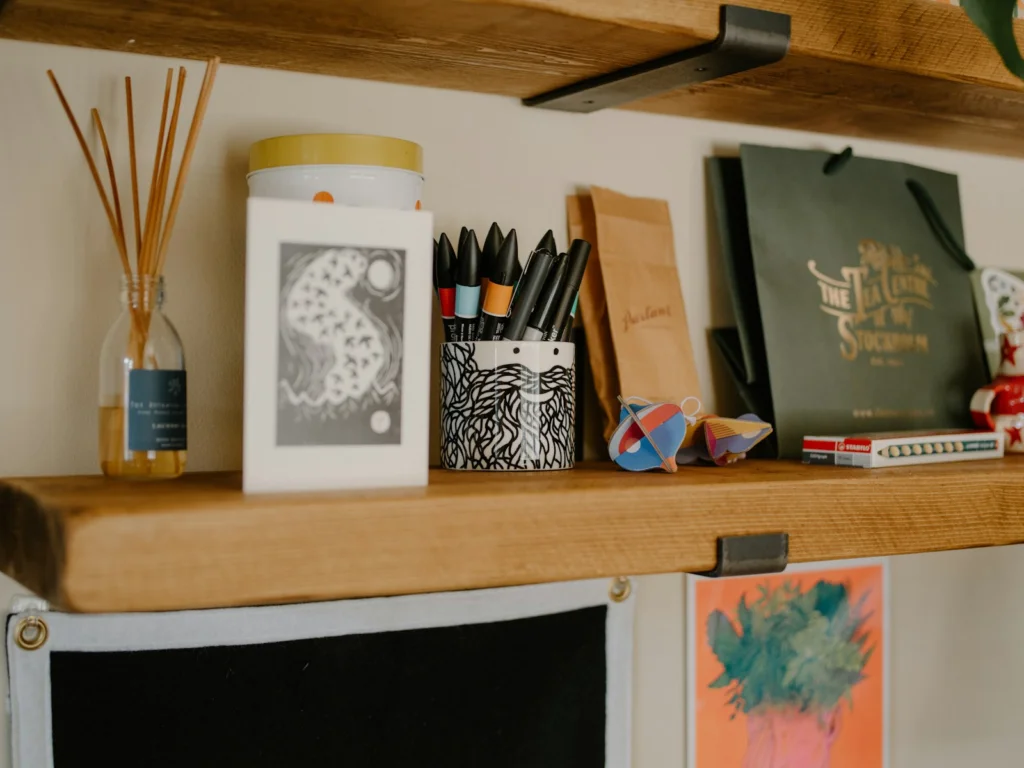
8. The “Take a Photo” Trick
This one sounds weird, but hear me out.
The process:
- Clean and organize a space
- Take a photo of it
- When it gets messy again, look at the photo
- Put things back where they go in the photo
Why this works: I can’t remember the “right” place for things. The photo is my reference. No thinking required.
I have photos of:
- My organized desk
- My bathroom counter (when it’s clean)
- Under my kitchen sink
- My coat closet
It’s like a treasure map back to order.
9. The “Good Enough Maintenance” System
This is the big one. The one that makes everything else sustainable.
The realization: Perfect is the enemy of done.
My maintenance levels:
| Space | Perfect (Rarely) | Good Enough (Always) | Disaster (Prevent This) |
|---|---|---|---|
| Kitchen | Counters cleared, everything put away | Dishes in dishwasher, counters mostly clear | Dishes piled in sink for days |
| Bedroom | Bed made, no clothes out, surfaces clear | Bed made OR clothes put away | Can’t see the floor |
| Bathroom | Everything organized, sparkling clean | Sink clear, toilet clean | Products everywhere, towels on floor |
| Living Room | Pillows fluffed, no clutter | Coffee table clear, pillows on couch | Can’t find the remote |
The goal: Stay in the “good enough” zone most of the time. That’s success.
What Organization Actually Looks Like for Real People
Let’s get honest about what works versus what looks good on Instagram.
Real organization means:
- You can find your keys in under 30 seconds
- You’re not buying duplicates of things you already own
- You’re not stressed when someone drops by unexpectedly
- You can get ready in the morning without chaos
- Your space feels calmer, even if it’s not perfect
Real organization does NOT mean:
- Everything matches
- Your home looks like a catalog
- You never have clutter
- You enjoy organizing (it’s okay if you don’t!)
- You’re doing it the “right” way
The Books That Actually Helped (Unlike That KonMari Disaster)
“How to Keep House While Drowning” by KC Davis This book changed my life. It’s for people who struggle with cleaning and organizing, and it’s full of compassion. The tagline is “A Gentle Approach to Cleaning and Organizing” and she means it. (Amazon link)
Key quote: “Care tasks are morally neutral. Doing the dishes doesn’t make you a good person. Not doing them doesn’t make you a bad person.”
“Organizing Solutions for People with ADHD” by Susan Pinsky Even if you don’t have ADHD, this book is gold. It works with your brain instead of against it. (Amazon link)
“Unf*ck Your Habitat” by Rachel Hoffman Funny, practical, and doesn’t require you to buy a single storage container. Real tips for real messes. (Website)
“A Slob Comes Clean” by Dana K. White Dana gets it. She’s not naturally organized either, and her methods work for actual humans. (Blog)
The Resources That Keep Me on Track
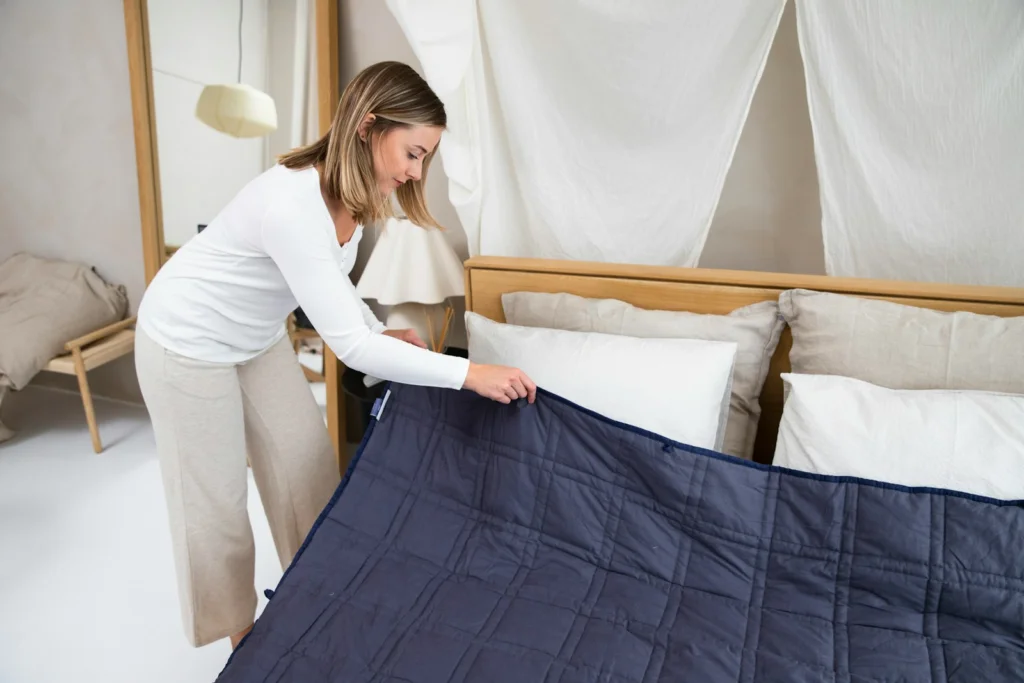
Apps (Free Ones That Don’t Overwhelm):
- Tody – Cleaning schedule that doesn’t shame you (iOS / Android)
- Sweepy – Gamifies cleaning (makes chores less boring) (iOS / Android)
- Inventory Plus – Track what you own (stops duplicate buying)
YouTube Channels for Real Motivation:
- A Slob Comes Clean – Dana’s decluttering videos are so relatable
- Cas & Lex Home – Real organizing for real homes
- The Minimal Mom – About having less, not organizing more
Instagram Accounts That Keep It Real:
- @domesticblisters – Cleaning humor that gets it
- @strugglecare – KC Davis’s account about care tasks
- @howtoadhd – Even if you don’t have ADHD, super helpful
My Weekly “Good Enough” Checklist
This is what keeps me sane. Copy it, modify it, make it yours.
Daily (5 minutes):
- [ ] Make the bed (or just pull the covers up)
- [ ] One touch rule with mail
- [ ] Dishes in dishwasher before bed
- [ ] Clear drop zones of obvious trash
Sunday Reset (15 minutes):
- [ ] Speed clean with laundry basket
- [ ] Wipe down kitchen counters
- [ ] Take out trash and recycling
- [ ] Quick bathroom wipe down
- [ ] Check drop zones
Monthly (30 minutes):
- [ ] One small decluttering project
- [ ] Check “container limits” – anything overflowing?
- [ ] Donation bag to car
- [ ] Refrigerator clean-out
Never (Because Life Is Short):
- [ ] Alphabetize anything
- [ ] Iron sheets
- [ ] Become a different person
What I’d Tell You Over Coffee
If we were sitting together right now, here’s what I’d want you to know:
You’re not failing at organization. The system is failing you. Most organization advice is created by people who naturally love organizing. That’s like a marathon runner giving you running tips when you’re just trying to walk to the mailbox without getting winded.
Your home should work for you. Not the other way around. If you’re constantly fighting against your own habits, the solution isn’t more willpower. It’s better design.
Maintenance is more important than perfection. A system that keeps things 70% organized all the time beats a system that gets you to 100% once and then falls apart.
You don’t need to be minimalist. Some people thrive with less. Some people (like me) have lots of hobbies and need lots of stuff. Both are okay. Organize the stuff you have, not the stuff Marie Kondo thinks you should have.
It’s okay to buy organizational tools. But buy them AFTER you figure out your system, not before. I wasted so much money on cute bins that didn’t work for my actual life.
The Bottom Line (Keep It Simple)
After my KonMari disaster and months of trial and error, here’s what actually matters:
Organization isn’t about having a perfect home. It’s about creating systems that reduce daily stress.
You don’t need to spark joy. You need to find your keys.
You don’t need to fold everything perfectly. You need to not be late because you can’t find clean pants.
You don’t need a Pinterest-worthy home. You need a space that feels calm enough to breathe.
And you definitely don’t need to be Marie Kondo. You just need to be you, but with a few tricks that make life easier.
Your Action Plan (Just Three Things)
Don’t try to do everything at once. That’s how I ended up surrounded by all my clothes, remember?
This week:
- Pick ONE drop zone in your home and put a container there
- Try the one-touch rule with just your mail
- Take a photo of one organized space
That’s it. That’s your homework.
Next week: Build on what worked. Ignore what didn’t. Add one more small thing.
Remember: Good enough is great. Done is better than perfect. And you’re doing better than you think.
The goal isn’t to become organized. The goal is to feel less stressed in your space. And honestly? You’re already on your way just by reading this. 💚
Quick Reference Resources:
- Unfuck Your Habitat – Real cleaning for real people
- A Slob Comes Clean – Blog with practical tips
- KC Davis (Struggle Care) – Compassionate approach to care tasks
- ADHD-Friendly Organization Tips – Even if you don’t have ADHD
Remember: Your worth isn’t determined by how organized your junk drawer is. You’re doing great.


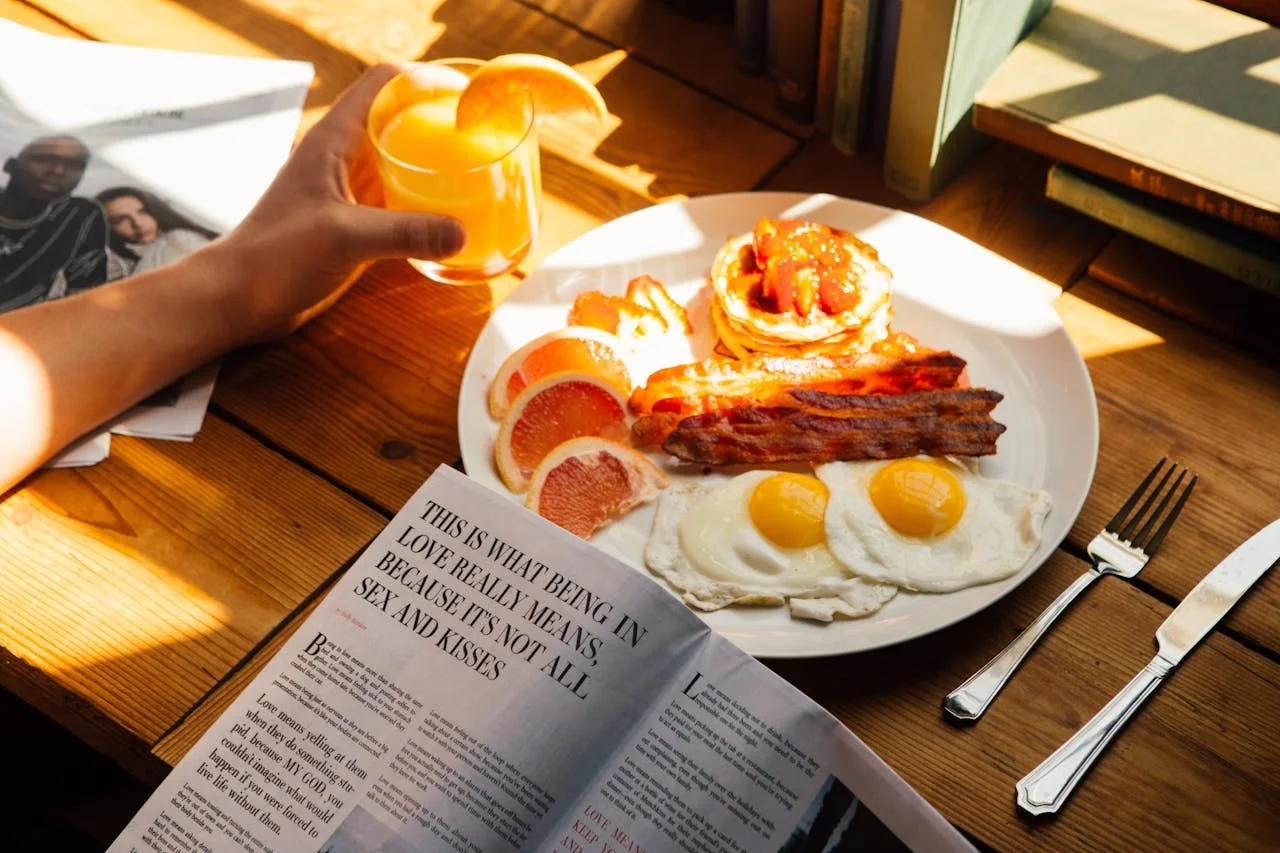
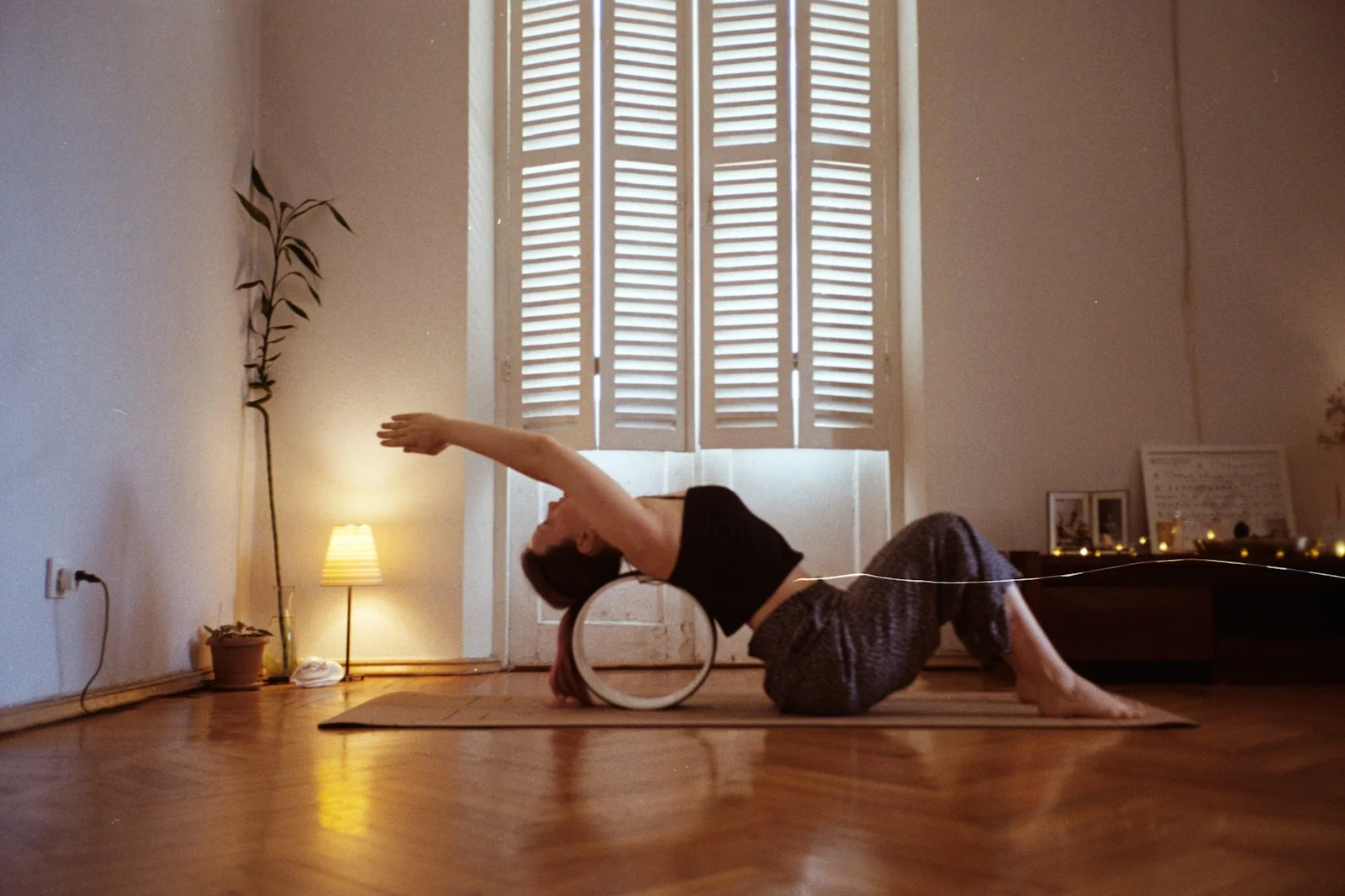

Leave a Reply